Choosing the right neighborhood in Toronto isn’t just about finding a place to call home—it’s about finding a spot that fits your lifestyle, especially if commuting plays a significant role in your daily routine. The impact of selecting a well-suited, commuter-friendly neighborhood is substantial. It’s about achieving a better work-life balance, reducing stress, and freeing up more time for the activities you love. In a sprawling city like Toronto, where traffic congestion and long commute times are the norm, choosing a neighborhood that aligns with your commuting needs isn’t just a smart move—it’s essential.
So, what makes a neighborhood ideal for commuters? It all starts with accessibility. Whether it’s proximity to Toronto public transit, major highways, or bike paths, having multiple transportation options is key. Not only does it shorten your commute, but it also provides flexibility when things don’t go as planned. Additionally, a neighborhood with a strong sense of community and growth potential offers more than just convenience; it offers lasting value and an enhanced quality of life.
Overview

Spadina Streetcar With CN Tower – wylipoon – June 4, 2018: Via Flickr
Transportation and accessibility are the core elements of any great commuter-friendly neighborhood. In Toronto, new transit projects often rejuvenate areas that were previously overlooked. Whether it’s a subway extension, a new bus line, or additional bike lanes, these improvements can transform a neighborhood into a commuter’s dream. And it’s not just about getting to work faster—these developments attract new residents and businesses, adding vitality and appeal to the area.
Proximity to public transit in Toronto is a game-changer, mainly because car ownership isn’t always necessary. Living near a subway station, streetcar stop, or major bus route ensures easy connectivity to the rest of the city. For drivers, being close to key highways like the Gardiner Expressway, Highway 401, or the Don Valley Parkway makes a significant difference when it comes to avoiding traffic.
Let’s not overlook new developments like the Eglinton Crosstown LRT, which are set to make commuting in Toronto smoother and greener. Cyclists, too, are benefiting from the expansion of dedicated bike lanes and paths across the city, making cycling safer and more convenient. As Toronto continues to enhance its transit network, the neighborhoods that benefit from these improvements are becoming increasingly attractive to commuters.
Best Neighborhoods for Public Transit Commuters
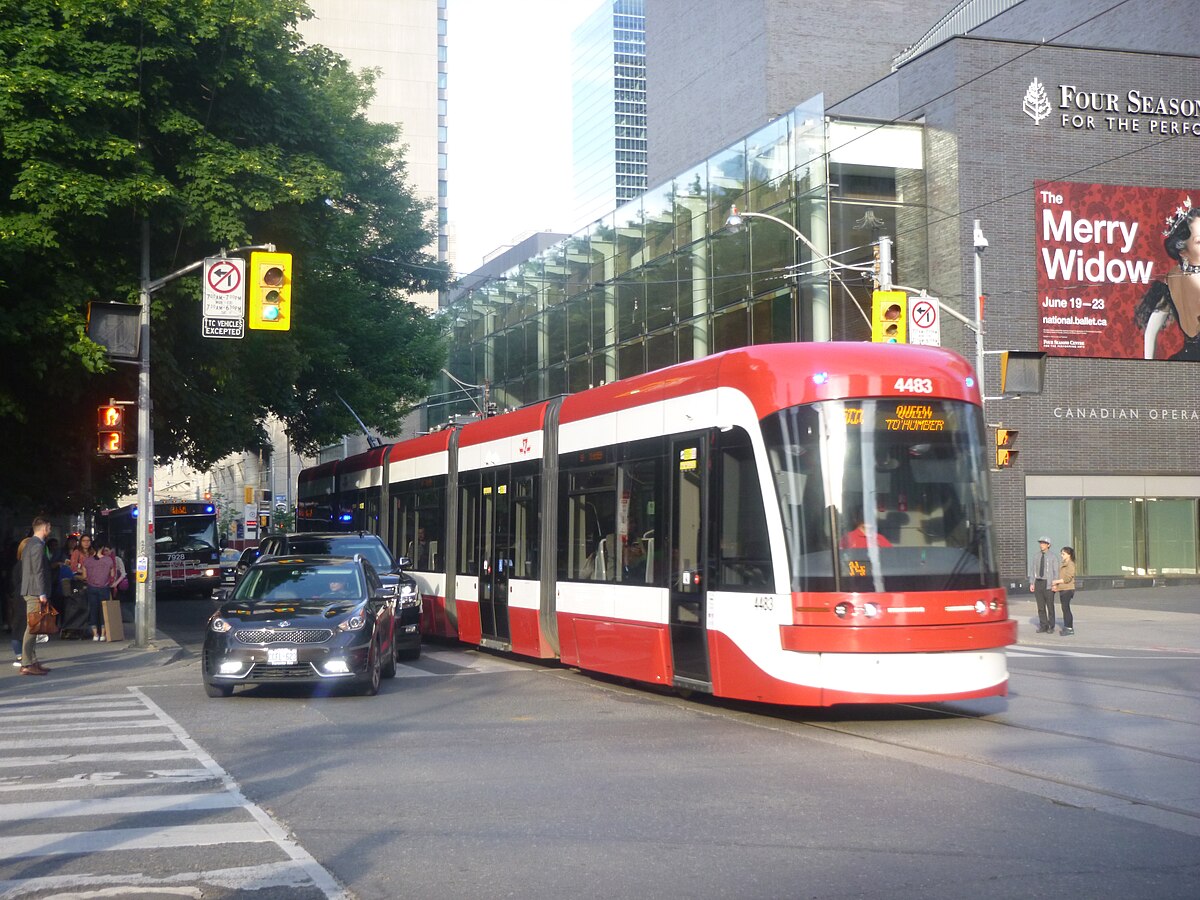
TTC Street Car at Queen And University – Wiki Commons
If you rely on public transit, the Leslieville neighborhood in Toronto should definitely be on your radar. With its close proximity to downtown Toronto and strong TTC connections, getting to the city’s core is a breeze. Streetcars and buses are plentiful, so you’re never too far from where you need to be. Plus, Leslieville offers much more—think hip cafes, unique boutiques, and a buzzing arts scene. However, keep in mind that the neighborhood’s popularity has driven up housing prices, making it one of the more expensive options.
Another excellent choice for public transit commuters is Davisville Village. Situated right along the Yonge subway line, it’s incredibly easy to zip around the city from here. Davisville Village is particularly appealing to families, thanks to its top-notch schools, green spaces, and strong community vibe. Like Leslieville, however, it has become a bit pricier as demand has increased, so that’s something to consider.
For those seeking the best of both worlds—convenient transit and a quieter residential feel—High Park in Toronto is a great option. Served by the Bloor-Danforth subway line, High Park offers direct routes to downtown while providing the peace and quiet of being near Toronto’s largest public park. The extensive green spaces, walking trails, and recreational activities make it an oasis within the city. That said, if you’re looking for a lively shopping or dining scene, High Park might fall short compared to more bustling areas.
Best Neighborhoods for Cyclists
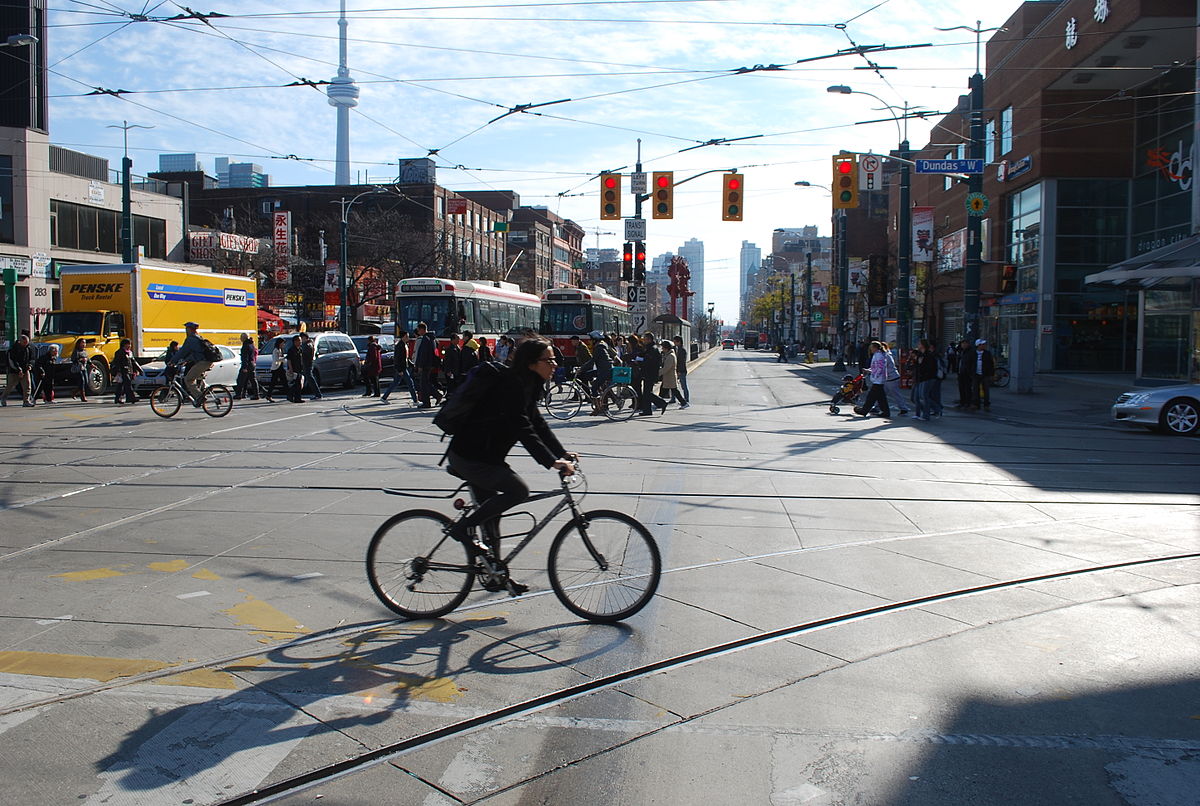
Bicycling Downtown Toronto – Wiki Commons
If biking is your preferred mode of transportation, Riverdale is a cyclist’s dream. With easy access to well-maintained Don Valley biking Trails, you can ride straight into downtown with minimal hassle. The neighborhood’s strong sense of community, bolstered by local parks, markets, and events, keeps everyone connected. Just be prepared for a bit of a workout—Riverdale’s hilly terrain can be challenging for those who prefer flat rides.
The Beaches is another gem for cyclists, especially if you’re drawn to scenic routes. The Toronto bike paths along the waterfront are simply stunning, offering beautiful views as you ride. Plus, there are plenty of parks, outdoor activities, and the iconic boardwalk, making it ideal for an active lifestyle. However, if biking isn’t your thing, the commute to downtown from The Beaches can be a bit of a work out.
Lastly, there’s Liberty Village—a modern, energetic neighborhood that’s super bike-friendly, with infrastructure connecting directly to downtown Toronto and the waterfront. It’s a hotspot for young professionals, with trendy eateries, cool cafes, and coworking spaces aplenty. The downside? Its popularity means it can get pretty crowded during rush hour, which can be a hassle whether you’re on a bike or behind the wheel.
Public Transit Pros And Cons
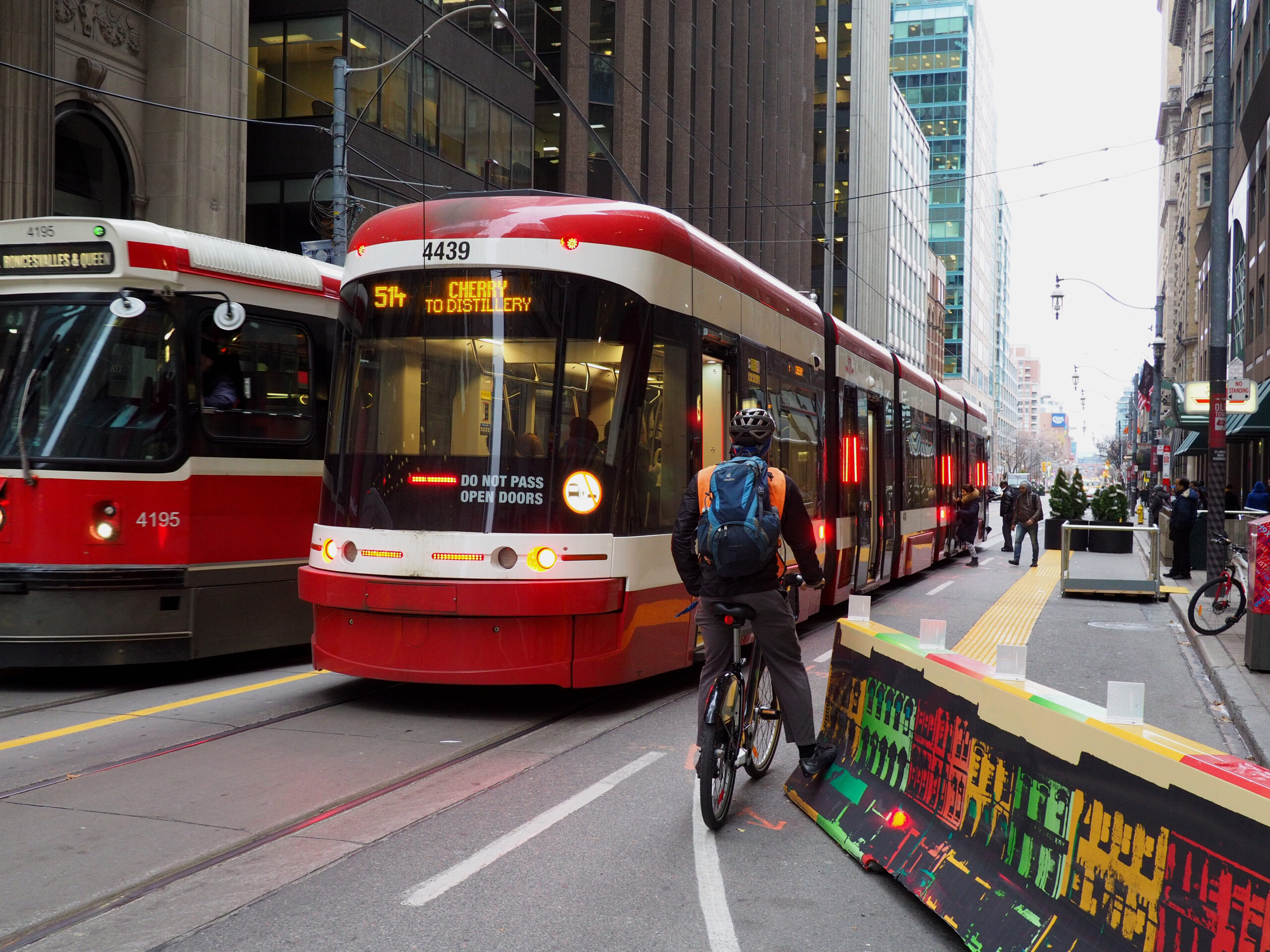
Toronto: Cycling On King Street – The City Of Toronto – February 20, 2018: Via Flickr
Public transit benefits Toronto residents greatly due to its wide range of benefits. It’s a reliable, affordable, and convenient option that appeals to those who would like to avoid the costs associated with car ownership. The TTC’s extensive network of subways, buses, and streetcars ensures strong connectivity across numerous neighborhoods, allowing commuters to reach their destinations with ease. Beyond the TTC, Toronto also offers other forms of public transit, including GO Transit trains and buses, which serve the greater Toronto area, and the UP Express, which provides quick and direct service to Pearson International Airport. These additional transit options expand connectivity, making it easier for residents to travel both within the city and to surrounding regions.
Public transit plays a crucial role because it offers affordable fares and broad coverage, enabling people of all income levels to participate in the city’s economic and social activities. For residents without access to a car, public transit is essential, connecting them to job opportunities, educational institutions, healthcare, and other vital services. Additionally, using public transit often involves walking or cycling to and from stops, which can positively contribute to daily physical activity and overall health.
However, public transit in Toronto has limitations. Overcrowding during peak hours is a common issue, leading to uncomfortable commutes, particularly on busy subway lines, buses, and streetcars. The discomfort of being crammed into a packed vehicle can add stress to the day, especially for those with long commutes. Furthermore, all forms of public transit are susceptible to delays caused by maintenance work, adverse weather conditions, or unexpected incidents, which can disrupt schedules and create uncertainty. In some neighborhoods, transit coverage may be less consistent, resulting in longer waits and extended travel times. While the benefits of public transit are clear, these challenges highlight the importance of balancing convenience and comfort when choosing a neighborhood.
Cycling Pros and Cons
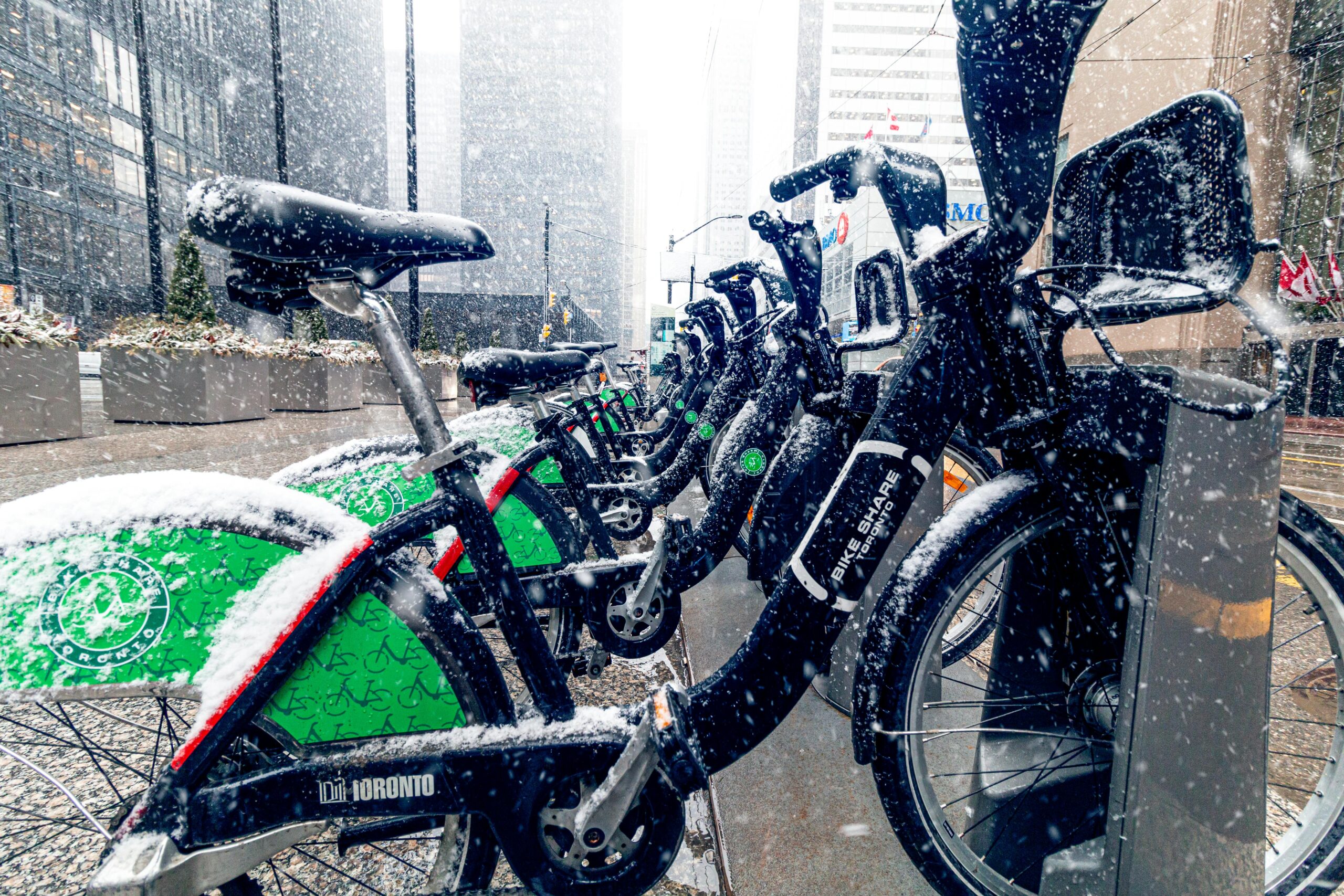
Snow On Parked Bikes – Andre Furtado – February 26, 2020: Via Pexels
Cycling is steadily gaining popularity as a preferred mode of commuting in Toronto, particularly in areas with dedicated bike lanes and trails. The health benefits of cycling are significant, offering a daily workout that can enhance overall well-being. Additionally, cycling is cost-effective in Toronto, eliminating fuel and transit expenses while providing flexibility in route selection, allowing cyclists to bypass traffic and choose more scenic paths.
However, cycling comes with its own set of challenges. Weather dependency is a major concern, as rain, snow, and extreme temperatures can make biking uncomfortable or even hazardous. Safety is another critical issue, especially in areas without protected bike lanes, where cyclists must navigate the risks of sharing the road with motor vehicles.
Driving Pros and Cons
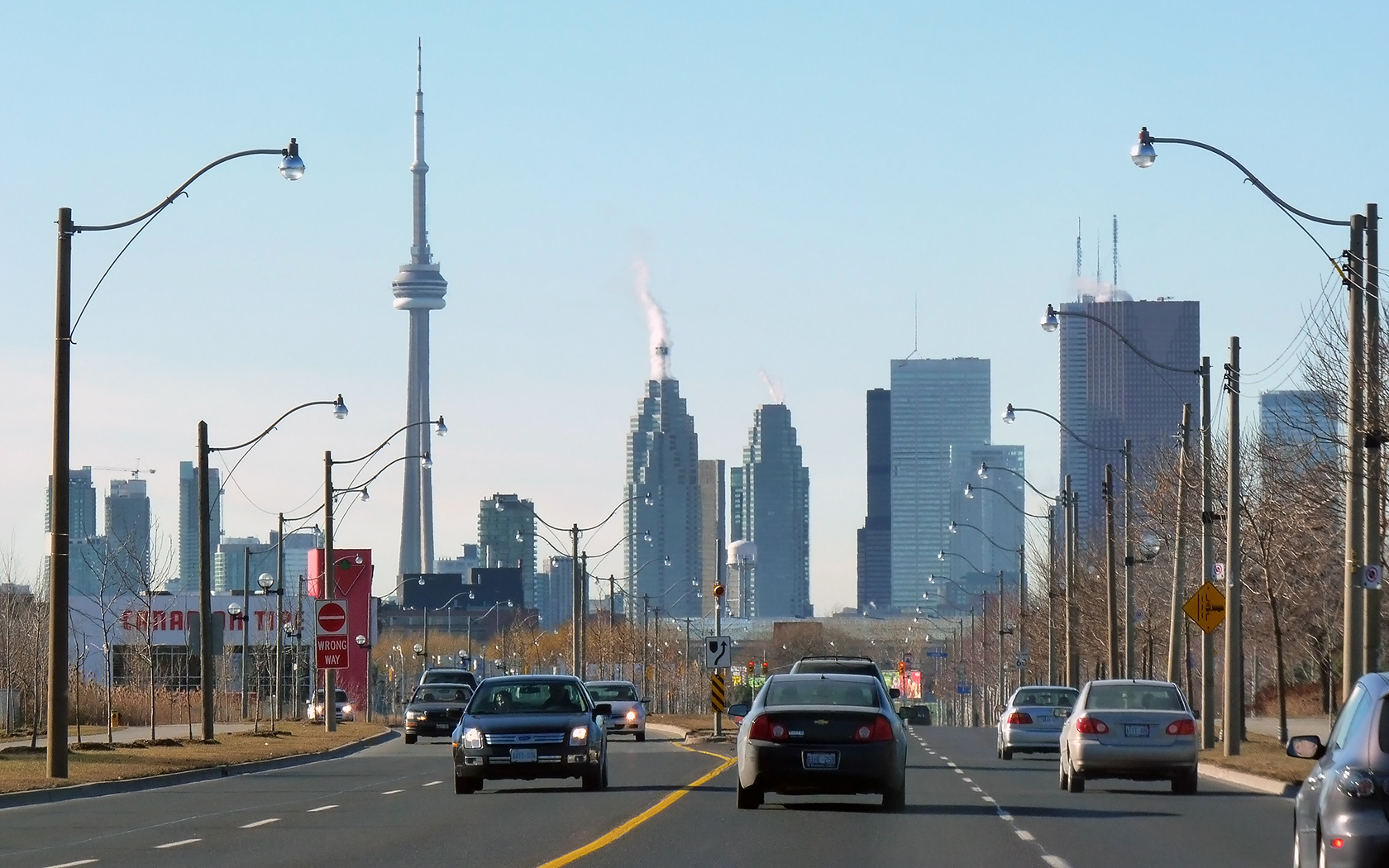
Cars Commuting On A Toronto Highway – Wiki Commons
Driving in Toronto can be a real game-changer when it comes to flexibility and convenience. If Driving in Toronto offers significant advantages, particularly for those living in neighborhoods with easy access to major highways like the Gardiner Expressway, Highway 401, or the Don Valley Parkway. For commuters, this means the flexibility to choose the most convenient routes, leave home on their own schedule, and transport groceries, gear, or even the entire family without the constraints of public transit. Neighborhoods close to these key highways are often sought after by busy professionals and families who need to reach various parts of the city—or even head out of town—without being tied to transit schedules.
However, driving in Toronto comes with its challenges. The city’s notorious traffic, especially during rush hour, can quickly turn a short trip into a lengthy and frustrating journey. Additionally, the costs associated with driving—such as gas, parking fees, and regular vehicle maintenance—can add up, making it a more expensive commuting option. Environmental concerns also play a role; the carbon footprint of driving is considerably larger compared to more sustainable modes of transportation, contributing to pollution and climate change. For these reasons, while driving offers unmatched convenience, it’s important to weigh these factors when choosing the best neighborhood for commuters in Toronto.
New Public Transit Developments
Toronto’s new public transit developments can significantly enhance a neighborhood, particularly for commuters who rely on efficient transportation options to balance their work and home lives within the city. In Toronto, ongoing transit projects like the Eglinton Crosstown LRT, Finch West LRT, and the Ontario Line are transforming accessibility across the city, making previously hard-to-reach areas more convenient and desirable. These developments not only reduce commute times but also boost property values and attract new businesses, contributing to the overall vibrancy of a neighborhood. Improved transit infrastructure can be a game-changer for residents, providing greater connectivity and making daily commutes less stressful. As these projects continue to unfold, they are reshaping Toronto’s urban landscape, offering commuters more flexibility and making neighborhoods better connected and more livable.
Supporting Local Businesses
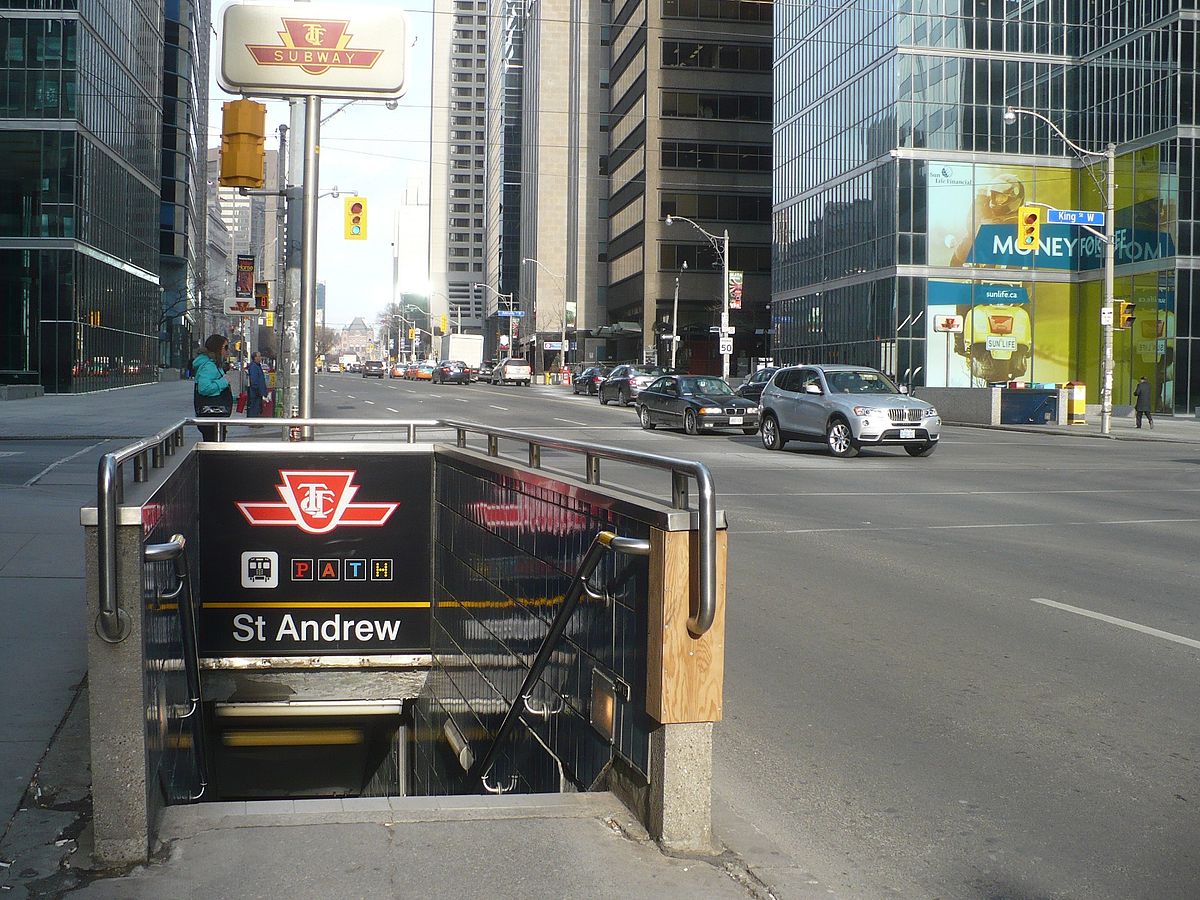
St. Andrews Station In Toronto Near Local Businesses – Wiki Commons
Supporting local businesses in Toronto and using public transit go hand in hand in creating vibrant, thriving neighborhoods. Local businesses, whether they are cozy corner cafés, friendly neighborhood markets, or unique boutiques, not only provide essential services but also create spaces where residents connect and build a sense of community. Public transit plays a crucial role in sustaining these businesses by making them easily accessible to a larger number of people, including commuters who rely on convenient transportation options. When you support local businesses, you’re not just helping to preserve the distinct character of your neighborhood and strengthen the local economy; you’re also making the most of your commute by turning everyday errands into opportunities to explore and support your community. In neighborhoods with strong public transit connections, it’s easier to frequent these local spots, fostering a closer-knit community and enhancing the overall living experience.
The Verdict
As we’ve explored some of the best neighborhoods for commuters in Toronto, it’s clear that each area offers its own unique set of advantages tailored to different commuting styles. Leslieville, Davisville Village, and High Park shine for their excellent public transit access, making them top picks for those who depend on the TTC. Meanwhile, Riverdale, The Beaches, and Liberty Village stand out for cyclists, thanks to their bike-friendly infrastructure and scenic routes that make every ride enjoyable. These neighborhoods each bring something special to the table, whether it’s accessibility, a close-knit community, or a vibrant local scene, though they also come with their own set of challenges, like rising home prices, congestion, or fewer commercial options.
Ultimately, choosing the right neighborhood in Toronto is about finding the right balance between convenience and your personal lifestyle preferences. Whether you’re drawn to quick downtown access, proximity to nature, or a neighborhood bursting with local culture, it’s important to consider both your daily commute and the kind of life you want to lead. A well-connected neighborhood can ease the stresses of everyday life and improve your work-life balance, but it’s just as crucial to ensure that the area aligns with your personal needs and long-term aspirations.
Finding the Right Real Estate Agent in Toronto
As we conclude our exploration of Toronto’s main attractions and the wonderful experiences they offer, one crucial aspect remains: finding the top real estate agent in Toronto and the Greater Toronto Area (GTA). Whether you’re a local resident or a newcomer to the city, having a trusted real estate agent by your side can make all the difference in navigating the real estate market and finding your dream home.
If you’re thinking of buying or selling real estate in Toronto or you’re seeking advice about real estate in this beautiful part of Ontario don’t hesitate to reach out to Frank Leo & Associates.
We have over 30 years of real estate experience in the GTA at your disposal. You can also get started taking advantage of our Guaranteed Home Selling System with a Free, no-obligation Home Evaluation.
Tagged Frank Leo Community ProfileGTA Real EstateNeighbourhood ProfileToronto neighbourhoodToronto Real Estate